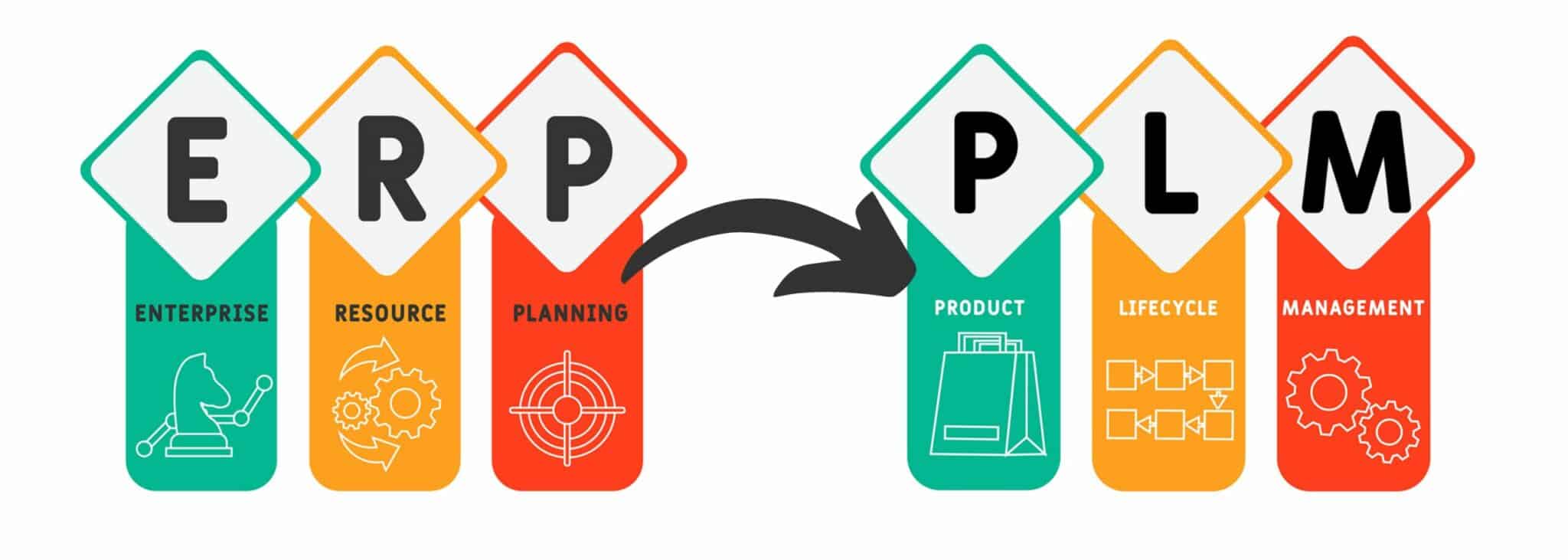by Jesta I.S. | September 18, 2023
Navigating the digital landscape is crucial for businesses in the apparel and footwear industry. Two pivotal tools, enterprise resource planning (ERP) and product lifecycle management (PLM), can greatly improve operational efficiency. Prioritizing an investment in an ERP software system before implementing a PLM system is a strategic advantage. By understanding the unique business functions of both systems, organizations can optimize their investments for maximal returns.
Understanding ERP & PLM
PLM and ERP systems cater to different business needs. While PLM manages a product from inception to retirement, ERP focuses on holistic business process management. These processes may including procurement, material requirements planning (MRP), inventory management, accounting, sales and even human resources. Finance, sales, HR, and supply chain functions often utilize ERP, while design and product teams typically employ PLM.
The Broad Spectrum
For apparel and footwear companies, diverse operational aspects extend beyond product development. ERP systems are well-equipped to streamline these broader operations. By integrating and automating back-office tasks related to technology, services, and human resources, ERP offers an invaluable tool for improving overall efficiency.
Data Management & a Single Source of Truth
ERP systems handle transactional data and provide real-time insights into business processes, making them instrumental in decision-making. Having real-time data and a comprehensive view of business operations aids in optimizing operations, making data-driven decisions, and predicting future needs. This global visibility contrasts with PLM systems, which primarily handle complex product data.
Integration Capabilities
ERP systems often possess excellent integration capabilities with other business units, ensuring seamless data flow across various operational areas. This not only enhances efficiency, but also reduces the likelihood of errors. While PLM systems can integrate with other systems, their scope is more narrowly focused on product data and related processes.
Future Scalability
ERP systems are generally more scalable than PLM systems, offering a more adaptable and future-proof investment. As an apparel or footwear business grows, the systems can adjust to handle increased transactions and more intricate business processes.
What’s In It For You?
The decision between ERP and PLM investments should align with a business’s unique needs. However, for apparel and footwear companies aiming for comprehensive operational efficiency and data-driven decision-making, ERP solutions are typically the more strategic initial investment.
ERP systems’ ability to manage broad business processes, support decisions, integrate with other systems, and scale with business growth make them essential tools for businesses. An ERP offers businesses the foundational stability and scalability necessary to then integrate a PLM system effectively.
To capitalize on the strengths of both, the ultimate goal should be to integrate ERP and PLM systems. However, by investing in an ERP implementation first, apparel and footwear companies can establish a robust foundation that will support and enhance the subsequent integration of a PLM system.
Products spend a majority of their journey being tracked by an ERP system. Check out the major stages of a product journey here.
Interested in learning more about Jesta’s Supply Chain Management Suite for wholesalers and brand manufacturers? Reach out for details.
